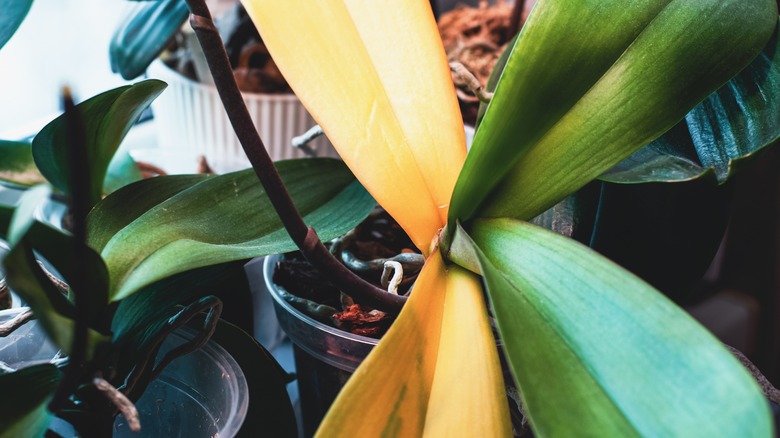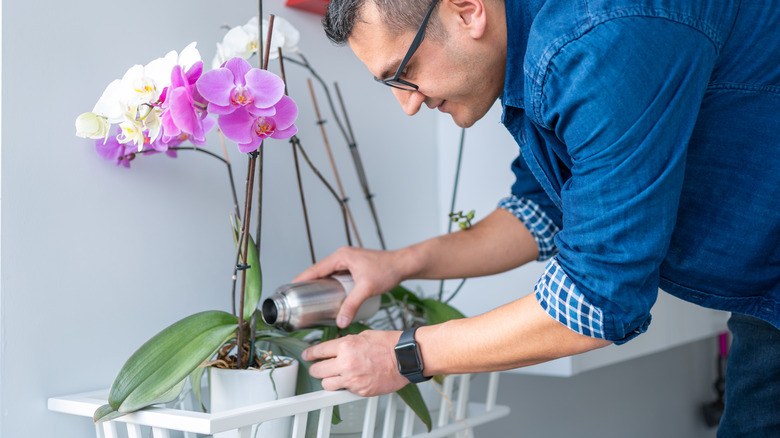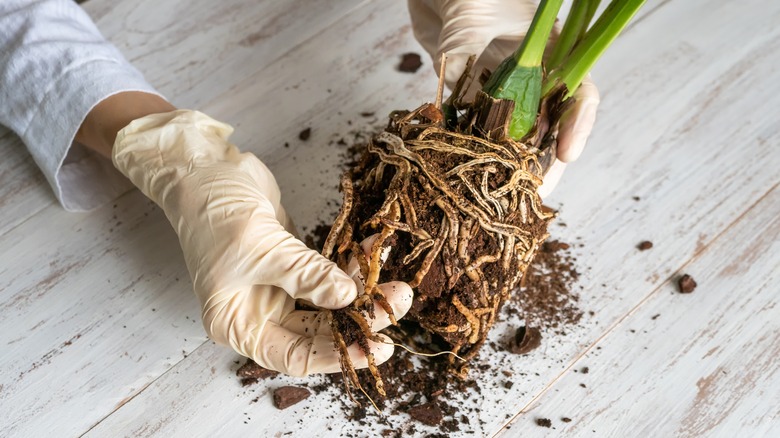Everything To Know About Why Your Orchid Leaves Are Turning Yellow
Orchids are great houseplants that can brighten up your home, and they also require less care than other plants do once established. Over time, however, you may notice your orchid plant's leaves begin to turn yellow. There are several reasons why your orchid might be turning yellow, including issues with watering, sunlight, or disease. While some reasons for yellowing will require attention and care, others are perfectly natural and are simply part of the plant's life.
As orchids age, older leaves near the base of the plant turn yellow and fall off, but this process is normal and new leaves will grow where the old ones were. What's not normal, though, is if your plant's leaves turn yellow due to overexposure to the sun. If your orchid is in direct sunlight, the leaves may become bleached or burned by the sun, making them yellow with white or brown spots.
Also, it's key to remember that these plants are tropical and thrive in conditions with higher humidity and indirect sunlight, so it's important not to leave them in a sunny window. On that same note, having the temperature of your home below 60 degrees Fahrenheit can also contribute to an orchid yellowing.
Water could be the reason your orchid's leaves are yellow
Overwatering or underwatering an orchid will cause its leaves to turn yellow as well. When an orchid receives too much water or if it cannot drain properly, it'll develop root rot, a disease that if left untreated can lead to a plant's death. To prevent root rot, make sure your orchid's pot has drainage holes and doesn't sit in water if it's in a saucer. Also, only water the plant when the soil begins to dry out. If you struggle to give your plant the right amount of water, try putting three ice cubes on top of the soil every week. This allows your orchid to get water slowly and steadily as the ice cubes melt.
Similarly, the leaves of an orchid will also turn yellow if the plant doesn't get enough water. If you forget to water your orchid for a long time or if it doesn't get sufficient water when you do, it'll become dehydrated and can die.
Other reasons your orchid is turning yellow
If your orchid plant has recently been repotted and its leaves start to turn yellow, it's most likely stressed from the move and will recover on its own. Orchids tend to like smaller pots and repotting too often can be harmful. You'll know your orchid needs to be repotted when its roots become white, but if the roots are green, your plant is thriving and shouldn't be transferred to another pot.
Disease is another culprit behind yellow leaves. Orchids sometimes develop fungal or bacterial infections, which can result from the temperature or humidity of your home changing. When an orchid has developed a bacterial infection, it'll smell unpleasant, but fungal infections have no scent and will cause the bottoms of the plant's leaves to turn yellow.
With all this said, by giving your plant the right amounts of water and sunlight and regulating the temperature of your home, you can avoid many of these causes for premature yellowing leaves — allowing your orchid to grow and thrive.


